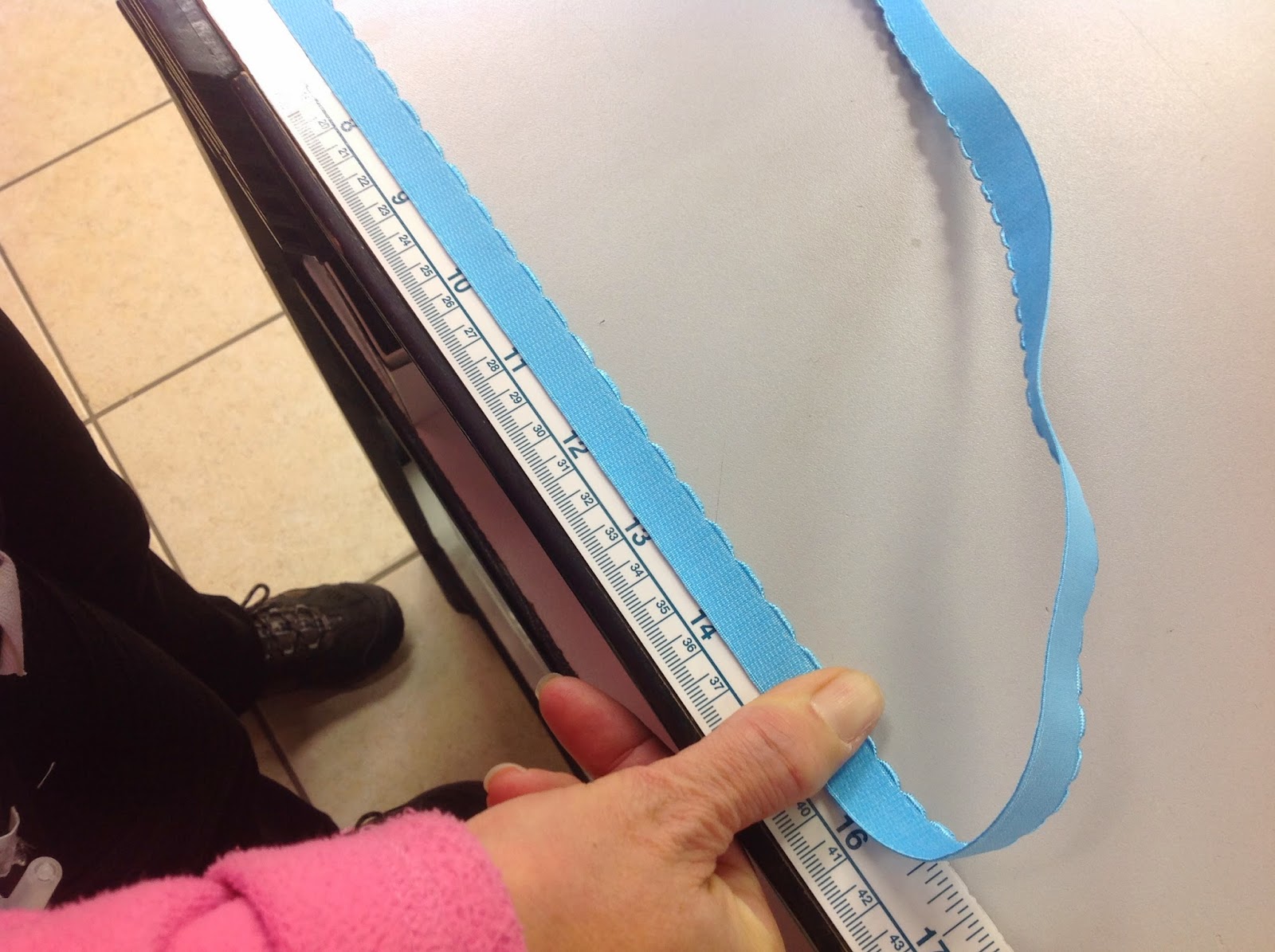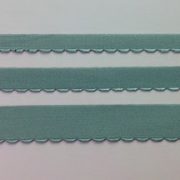I am sure there are few things worse than sewing up a pattern you love, in a size you know fits you – only to have it NOT FIT at the end! Grrr…very frustrating! But when that sewing project is your very own perfectly fitting bra pattern – it’s even worse than frustrating! It’s like you have been betrayed by your underwear! <wails and weeping here> What happened? Did you ever think it is the elastic to blame? It might be. Let me explain the trouble with elastics…
We all know that elastic varies in width among manufacturers, but the trouble with elastics is that also varies greatly in strength too. Some elastics have a lot of stretch which means if I pull on 10″ (25 cm) I can pull it out double its original length to 20″ (50 cm). That means it stretches 100% over its original length (20″ over 10″ x 100% = 200%). Elastic that stretches to 15″ over its original 10 has 150% stretch (15/10 x 100%).
Generally speaking you want elastic with between 140-180% stretch for the bottom band of a bra. There’s a huge difference between 140 and 180% stretch. What happens if your original pattern was drafted and sewn using an elastic much stretchier than the one you are using now? In other words your first bra was sewn using elastic that was 180% stretch and the second bra was only 140% stretch. Hmmm – that means the bra band on the second bra will feel tighter than the first. 40% tighter in fact! Guaranteed. Sometimes too tight to wear, even.
At Bra-makers Supply, we have two types of bottom band elastics, which we call the OLD (soft) and the NEW (firm) elastic (because I am SO creative with names…lol). The OLD elastics EB-37, EB-47 and EB-67 have a stretch that varies between 170-180% which is definitely on the weaker side of bra band elastics. That’s the elastic I used to create all the Pin-up Girls patterns with. You can see that this 10″ stretches to 17″
The NEW elastics EB-372, EB-472 and EB-672 are much firmer as we wanted elastics that would stand the test of time during the washing and wearing process. This NEW elastic is much firmer, with about 140-150% stretch, which means it won’t ride up and will last for years! It also means that if you use 3/4″ elastic now, you will get the same holding power with 1/2″ elastic!
You can see that 10″ here stretches only to 15″
Most bra pattern designers use a “standard” elastic stretch percentage of 170%. That means you should always check your elastic against the norm. If it is less than 170% stretch, chances are good that you need to increase the length of the back band so it will have the same comfort level on your body.
Here’s the important part:
You need to increase the length of the band by the difference in the percentage of the two elastics. In this case, one elastic is 170% and the other is 150%. That is 20% difference. You need to increase your back band pattern piece by 20% in length. Here is how to do that.
Measure the back band pattern piece. Draw a vertical line in the centre of the back band as shown above. Calculate 20% of the length (or whatever the difference is between the two elastics in question). Spread the two pieces apart by that distance. True up the lines at the top and bottom edge of the band.
Your new back band is ready to use. Remember to label the piece as “band for elastic with 150% stretch!” In our Pin-up Girls patterns, we tell the students to add about 1″ to the back band in order to use the new elastics. Wasn’t that easy? No more trouble with elastics! Now you can buy whatever elastics you like and know they will fit every time!







It would be helpful if the kits came with a note or reminder that says, "This kit contains the new firmer elastic, please remember to increase the back band length on your pattern." I've been burned by this twice now and since made up a new back band piece for the firmer elastic.
Thank you for this post. This is super helpful info and makes me feel smarter! I immediately tested the elastics included in a kit I recently bought from an etsy supplier. The band elastics from them felt weak and too stretchy but I had no hard numbers to give — until now! Following this test, the band elastic in this kit does have 170% stretch. However, it has poor recovery. The 10" piece remains stretched out to 10 1/2". Recovery is not mentioned in this post, but the elastic should snap back to 10" or whatever the original relaxed length. Correct? Is there a " tolerance" for recovery? In other words, can the elastic piece after stretching out still be usable even it's say 1/2" or even 3/4" longer post-stretching? Or is +1/4" the max? I'm worried this band elastic I have in my kit will produce a garment with a very short life. Would you recommend shortening the back band a bit?
Does the 140% – 180% stretch also apply to underwear elastics used in the waist and leg?
I agree with the PP, that this info should be made available in the Craftsy resource materials. I printed this post out and put it with my Craftsy syllabus!!
I can propose it, but they respond better to prospective students asking for new classes. I guess we need to encourage a bunch of people write to Craftsy for this type of class!
Why don't you?! 🙂
I agree! I would love to have a whole class going into fabrics and elastics!
Yes, absolutely, you could add the appropriate amount to the back band if you know that the elastic is firmer than what the pattern was designed for.
Excellent! No one realizes the impact that elastics can have on the final fit!
Your elastic knowledge was something I clearly didn't understand when I first tried to sew a bra. Now it's making lots more sense. There are a few different types of elastics available locally so I'm trying a few with different powermesh fabrics so I can make bras that work.
If the Pin Up patterns were designed with 170% stretch, should we immediately modify the back length without further ado if we intend to use a less stretchy elastic? Or should we make a muslin first?
That explains why I've made three practice bras out of fabric and findings I've had in my stash for a long while and all fit differently. This would have been a valuable addition to the Craftsy class
It depends on the colour. If it has the pretty little scallops on it as the turquoise above, the elastic is the new style EB-372,472 or 672. If it has the very tiny picots on it, it is the old style EB-37,47 or 67.
So if we have bought a kit from you fairly recently, which elastic did we get in it?